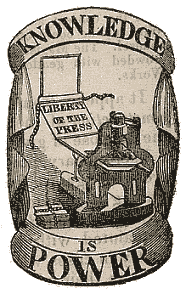






Government’s view of the economy could be summed up in a few short phrases: If it moves, tax it. If it keeps moving, regulate it. And if it stops moving, subsidize it.” —Ronald Reagan
The thrust of the argument proposed by those who want to socialize our medical care system is it's prohibitive cost.But when they tell you medical care cost too much they do not tell you that included in their estimate of medical care costs is this fact.
While Americans may complain about the high cost of health care, they're still willing to shell out roughly $34 billion a year out-of-pocket on alternative therapies that aren't covered by insurance, a new study shows.
That's a growth of more than 25% in the past decade, says an in-person survey of 23,000 Americans from the Centers for Disease Control and Prevention and National Institutes of Health
In a desperate attempt to deflect criticism from the Congress for try to ram through a trillion dollar bill that would not only socialize the best medical care in the world. And I say that with out any reservations, because you do not find many people going to Canada or Great Britain from the USA for medical care. But thousands come here every year to be treated at such medical centers as Mayo Clinic, and the Cleveland Clinic! Speaker off the House, Nancy Pelosi on Thursday ramped up her criticism of insurance companies, accusing them of unethical behavior and working to kill a plan to create a new government-run health plan.
"It's almost immoral what they are doing," Pelosi said to reporters, referring to insurance companies. "Of course they've been immoral all along in how they have treated the people that they insure," she said, adding, "They are the villains. They have been part of the problem in a major way. They are doing everything in their power to stop a public option from happening."
If any one is immoral it is those in Congress that are pushing Euthanasia, abortion and medical care rationing disguised as a "reform" of Medical Care!!
Author Sally Pipes wrote this about the proposed Congressional health plan. "The top three myths are: 46 million Americans have no health insurance and therefore no health care; an individual mandate will lead to universal coverage; and socialized systems such as those in Canada and Europe are cheaper and more efficient than ours. If I were to write the book today, I would add another myth: that America’s health-care system puts our employers at a competitive disadvantage and hurts our economy. No less an authority than the Congressional Budget Office has debunked this myth, noting that it is employees who pay the tab, not the company, as it’s merely a substitute for wages. Yet this is a major selling point in the Democratic push to government health care.
Health care is a necessity of life, similar to food, clothing, shelter, and to some degree transportation in modern America. It’s not a right, as traditionally understood in our constitutional system informed by the great truths of the Declaration of Independence’s promise of life, liberty, and the pursuit of happiness.
The American Revolution was fought and based on the natural rights of man. Society should be organized to assist individuals in providing these things through the protection of property rights and keeping taxes low so Americans can make their own decisions on how to spend their money rather than putting government in charge. Unfortunately, supporters of government-run health care and the mainstream media have been telling the American people that health care is a right, and that view has been gaining significant momentum over the last few years.
Americans certainly enjoy government-granted rights to health-care services. Medicaid is a categorical program for low-income Americans that meet its criteria. Children have rights under SCHIP [the State Children’s Health Insurance Program], seniors under Medicare, and we all enjoy rights to being treated at hospitals, regardless of our ability to pay. This is similar to how we deal with the other necessities.
When people say health care is a right, there is the underlying notion that it should be provided at zero price at point of consumption, or, worse yet, no cost at all, ever. This is impossible, as doctors, nurses, hospitals, pharmaceutical companies, and other providers in the system can’t be expected to work for free. We don’t expect other necessities to be free or provided by the government or paid for collectively. In fact, we’d be horrified if they were provided this way. A little known fact is that of all of life’s necessities, save clothing, health care is by far the least costly. It’s not until Americans become senior citizens that the average household spends more out of pocket on heath care than entertainment and dining out. Yet we don’t decry the crisis in restaurant bills, football games, and rock concerts".
Of the almost 46 million Americans counted as uninsured by the U.S. Census Bureau, 14 million of them are eligible for existing government programs but have not signed up. Another 17 million of them are earning over $50,000 a year but do not buy insurance because they feel it is too expensive. Two-thirds are young people between 18 and 31 who consider themselves “invincible.” They would buy insurance if it were cheaper and available to cover catastrophes, which is why one has insurance.
Because 64 percent of Americans get their insurance through their employer and insurance is not portable, many of the uninsured are just between jobs and hence counted as uninsured, even if they are only uninsured for a short period of time. There are only about 8 million uninsured that need some assistance".
Our health-care system is already dominated by government. We do not have a market- based health-care system today. Forty-seven percent of the American health-care sector is in the hands of government through Medicare, Medicaid, SCHIP, and the Veterans Administration. Today’s political leaders and the Obama administration want to take over the other 53 percent.
According to a recent poll by Harvard professor Robert Blendon, 82 percent of Americans rate their health care as good or excellent. This statistic would drop significantly if the government became the only provider, with a global budget set by government to control costs. Or if people got shunted to a Medical Home, the current Orwellian term for staff-model HMOs, and were told they could only see a restricted number of specialists after their overworked and underpaid primary-care doctor had granted permission. They would be very dissatisfied if, in order to keep costs under control, government denied care, long waiting lists appeared, they were denied access to the latest technological innovations, and they faced a shortage of doctors. This is the situation in Canada today.
Instead of increasing the role of government in the system, we need to put patients and doctors in charge of health-care decisions. The tax code needs to treat the purchase of health care equally, whether a family secures it in the private market, through an employer, through being self-employed, or through a trade association or other affinity group. This would allow many coverage options to emerge, some of which would surely guarantee a lifetime of coverage, just as private insurance guarantees disability insurance over a working life and life insurance until death.
The key is to free up options for innovation. There are about 2,000 mandates on insurance companies across the nation adding between 20 to 50 percent to the cost of premiums. Guaranteed issue and community rating (not allowing coverage to be based on health status or age) also increase costs. These costly mandates should be eliminated. Individuals should be allowed to buy insurance across state lines so they can get the type of insurance that fits their particular needs.
Last but not least, there should be medical-malpractice reform. A lot of doctors practice defensive medicine for fear of being sued. This practice also adds to costs.
If we can offer Americans universal choice, we will be able to achieve universal coverage or, more important, universal access to care and indemnification from financial ruin due to health-care expenses.
SOURCE: NATIONAL REVIEW
AND IF YOU HAVE ANY DOUBTS THAT ONE OF THE CORNER STONES OF SOCIALIZED MEICINE; This should ally your doubts.
"On its Flu.gov Web page, HHS says the government is working to produce enough vaccine for the entire population, but there will be shortages when a vaccine first becomes available – probably in mid-October.
That means the “limited supply” will have to be “prioritized for distribution and administration.”
On July 29, the Advisory Committee on Immunization Practices – a group that advises the federal Centers for Disease Control and Prevention -- recommended that novel H1N1 flu vaccine be made available first to the following five groups:
-- Pregnant women
-- Health care workers and emergency medical responders
-- People caring for infants under 6 months of age
-- Children and young adults from 6 months to 24 years
-- People aged 25 to 64 years with underlying medical conditions (e.g. asthma, diabetes)
Nothing is said about people over the age of 64, with or without underlying medical conditions.
Source:CNSNEWS.com








No comments:
Post a Comment